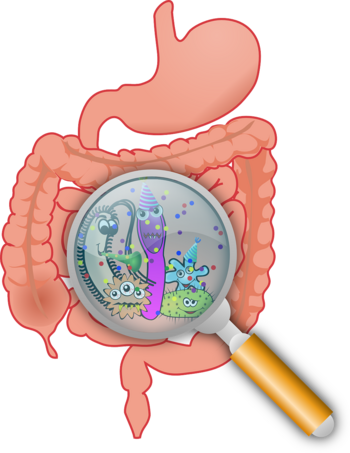- IT
- |
- EN

[Date of last update: July 2021]
Gastrointestinal infections represent about 5-7% of all infections detected and can involve both patients admitted to hospital care settings and patients in long-term care facilities. Among the various microorganisms, Clostridium Difficile is the most frequent cause of diarrhea in the clinical-care setting, with an incidence in Europe of about 125,000 cases / year, and an estimated economic impact in the United States that exceeds 3 billion dollars. [1] From an epidemiological point of view, relevant gastrointestinal infections are also sustained by Shigella, Salmonella, Campylobacter, Escherichia Coli, Norovirus, Adenovirus, Rotavirus, Giardia and Entamoeba Histolytica.
The risk of developing a gastrointestinal infection depends on multiple factors such as the patient's age (advanced age or early years of life), the immunological status, the cognitive status and the characteristics of the intestinal microbiota (the immuno-modulation condition guaranteed by the microbial population that physiologically colonizes our intestine and guarantees its structure, functionality and protection).
Among the many interventions, treatment with antibiotics can cause alterations of the intestinal micro-environment and imbalances of the microbiota, representing one of the main predisposing factors in the onset of gastrointestinal infections also sustained by MDR microorganisms.
The most frequent routes of transmission of gastrointestinal infections are the fecal-oral route and the direct or indirect contact with infected / colonized patients or contaminated surfaces. Among the Infection Control strategies, aimed at limiting the transmission of gastrointestinal infections, hand hygiene, the correct use of personal protective equipment (PPE), environmental hygiene , reprocessing of multipurpose devices and management / placement of the colonized / infected patient in a hospital or community setting. [2]
Among the strategies of Infection Control, aimed at containment of the transmission of gastrointestinal infections, hand hygiene, the correct use of personal protective equipment (PPE), environmental hygiene, reprocessing of multi-purpose devices and the management/isolation of the colonized/infected patient in hospital or community settings are playing a main role [2].
[1] Simpios. Prevenzione e controllo delle infezioni da Clostridiumdifficile. GIIO, vol. 16, n.1,Gennaio-Marzo 2009
[2] Jane D. Siegel, MD; Emily Rhinehart,RN MPH CIC; Marguerite Jackson, PhD; Linda Chiarello, RN MS; the HealthcareInfection Control Practices Advisory Committee 2007, Guideline for IsolationPrecautions: Preventing Transmission of Infectious Agents in HealthcareSettings Last update: July 2019.
Edited by Emanuele Matteini